15 Beaches That Are Beautiful But Deadly — And 3 That Are Just Too Risky
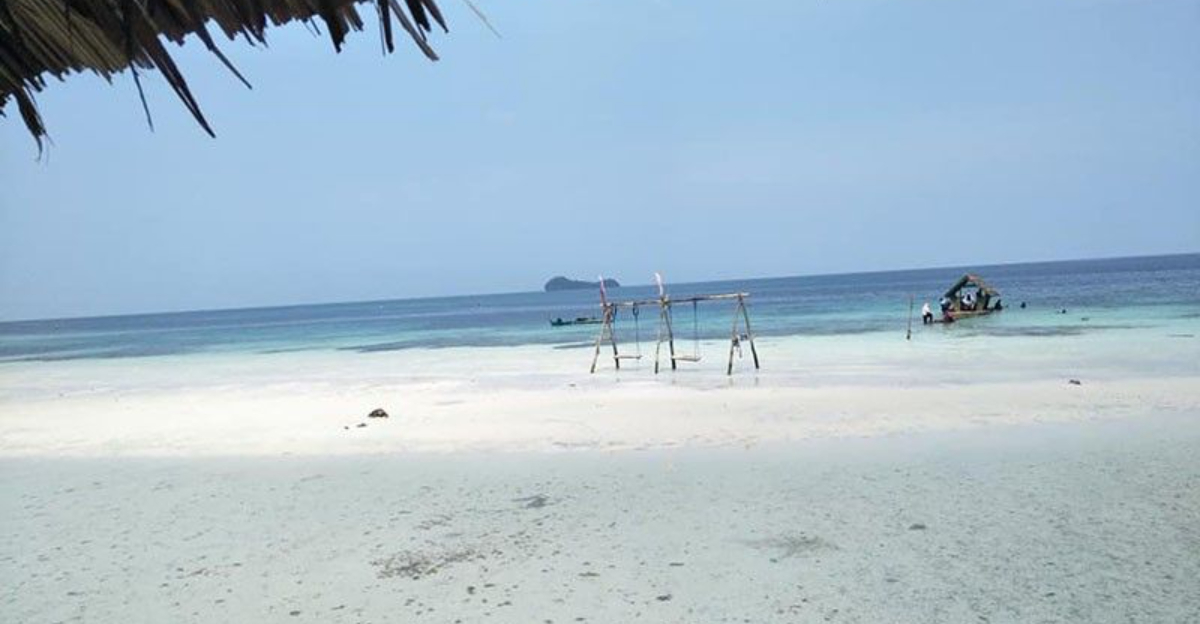
That postcard-perfect beach might look like paradise, but sometimes the real story lies beneath the surface—literally. Have you ever stood at the edge of crystal-clear water, only to later learn it’s teeming with jellyfish, rip currents, or pollution warnings?
I have, and trust me, it’s a shock that can change how you travel. From Florida’s deceptively calm surf to Australia’s shark hotspots and tropical shores plagued by unseen toxins, these beaches demand more than just sunscreen and a beach towel. Some require serious respect—and a bit of research—before diving in.
Curious which coastal destinations come with red flags despite their Instagram appeal? Here’s my guide to the world’s most dangerous (yet undeniably stunning) beaches, and what every traveler should know before taking the plunge.
1. Hanakapiai Beach, Hawaii
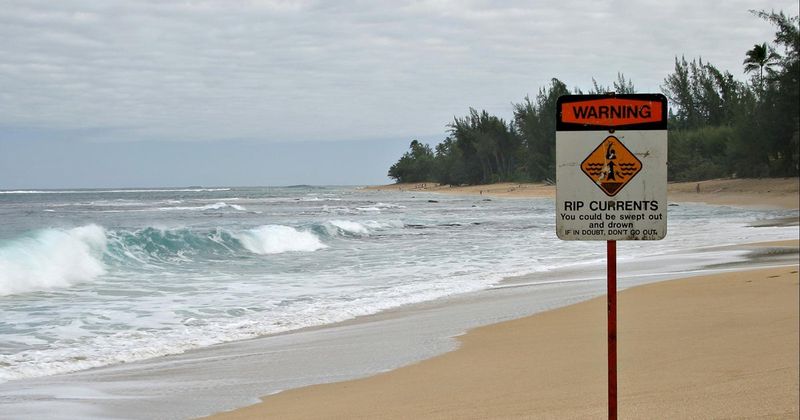
Hidden along Kauai’s Na Pali Coast, Hanakapiai’s turquoise waters and golden sands create a postcard-perfect paradise. But don’t be fooled by its inviting appearance!
Strong rip currents have claimed over 80 lives here, as powerful waves can sweep even strong swimmers out to sea in seconds. The nearest help is miles away along a challenging hiking trail.
Warning signs display an ongoing tally of drownings to deter swimming, yet visitors still risk it all for photos. If you visit, enjoy the spectacular view and nearby waterfall, but stay on dry land.
2. Skeleton Coast, Namibia
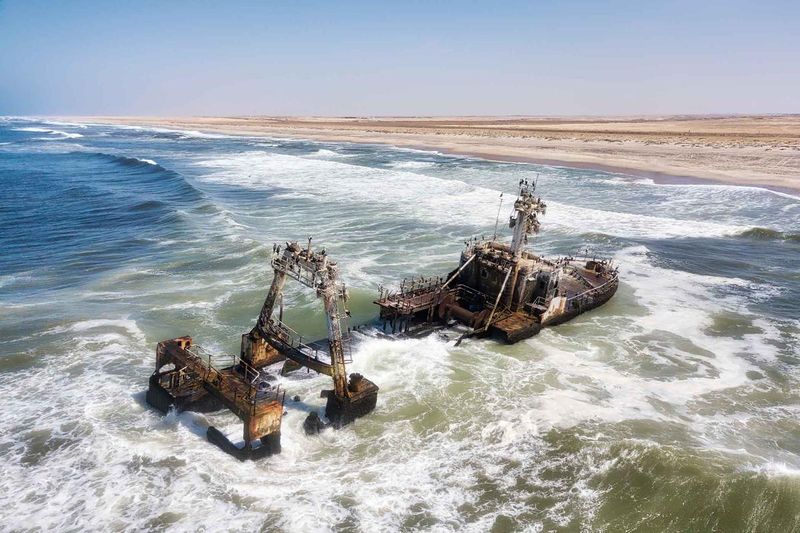
Nicknamed the ‘Land God Made in Anger’ by local Bushmen, Namibia’s Skeleton Coast earned its grim name from the whale bones that once littered its shores – now joined by shipwreck remains.
Dense fog, violent surf, and treacherous currents create a deadly trifecta for sailors and swimmers alike. The cold Benguela Current collides with hot desert air, creating a permanent mist that disoriented countless ships before modern navigation.
Despite its deadly reputation, wildlife thrives here – lions, elephants, and seals have adapted to this harsh environment where the desert dramatically meets the Atlantic Ocean.
3. Gansbaai, South Africa
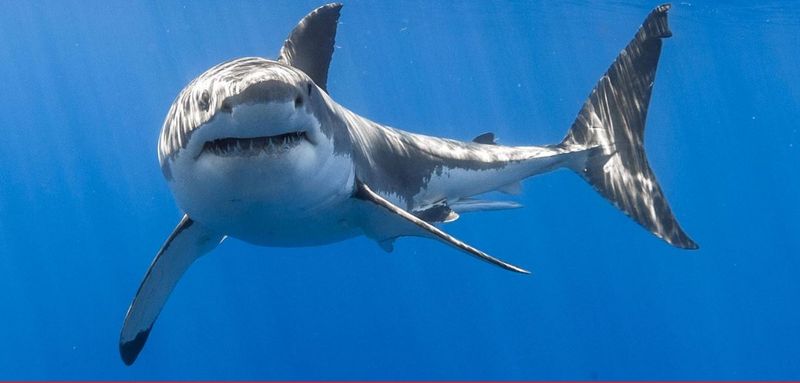
Adrenaline junkies flock to Gansbaai for its crystal-clear waters and unique marine encounters, earning it the nickname ‘Shark Alley.’ This coastal paradise hosts the world’s densest population of great white sharks, drawn by the 60,000-strong seal colony at nearby Dyer Island.
While cage diving tourism thrives here, unprotected swimming is practically suicidal. These apex predators can detect a single drop of blood from a quarter mile away!
The beach itself boasts stunning white sands and dramatic views, but remember – beneath those picturesque waves lurk some of nature’s most efficient predators, constantly hunting in the nutrient-rich waters.
4. Praia de Boa Viagem, Brazil
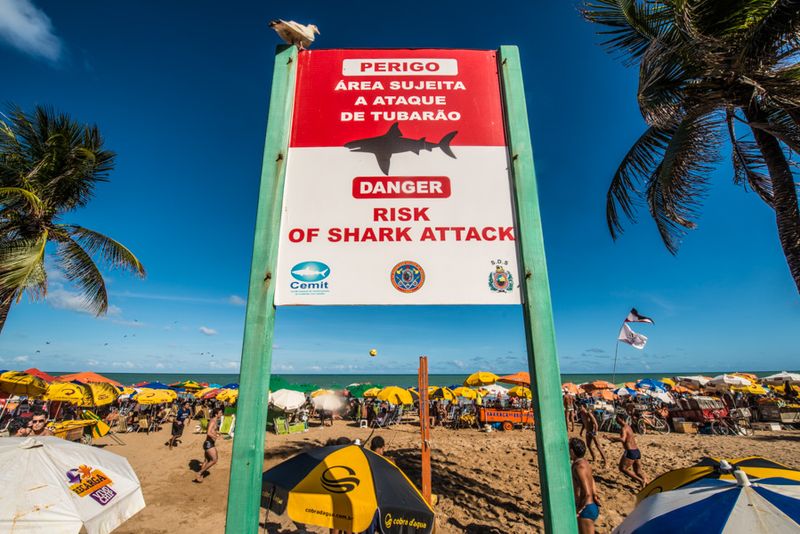
Recife’s main urban beach dazzles with its palm-lined promenade and warm golden sands stretching alongside modern high-rises. Locals and tourists alike are drawn to its accessibility and beauty, but a deadly threat lurks offshore.
Since 1992, over 60 shark attacks have occurred here, with a staggering fatality rate of nearly 40%. Bull and tiger sharks, displaced by port construction and drawn by slaughterhouse waste, now patrol these waters relentlessly.
Red flags and lifeguard warnings are permanent fixtures along this otherwise gorgeous stretch. The stark contrast between the idyllic setting and its deadly reputation makes this one of Brazil’s most paradoxical beaches.
5. Kilauea Black Sand, Hawaii
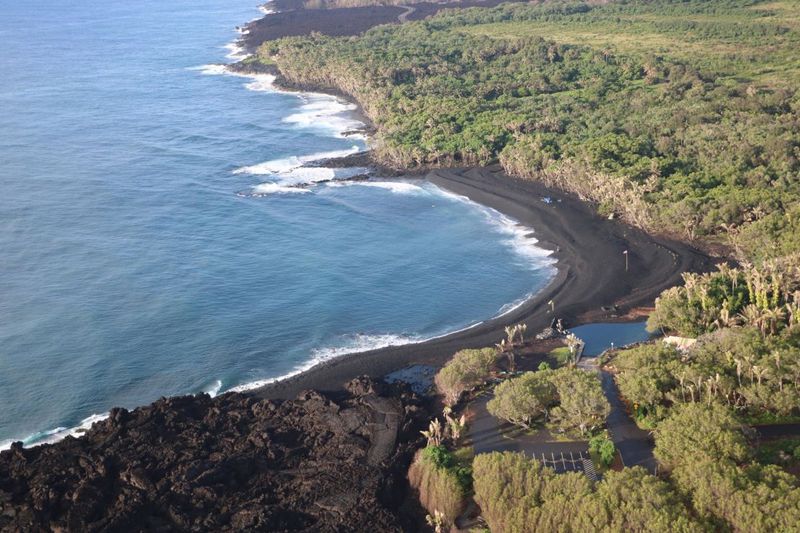
Formed when molten lava meets cold ocean water, Hawaii’s black sand beaches are among the most photographed natural wonders on earth. Kilauea’s dramatic obsidian shoreline creates a mesmerizing contrast against turquoise waters and swaying palms.
What makes this beauty deadly? The beach itself is constantly changing due to volcanic activity. Sudden lava flows, toxic gas emissions, and scalding water pockets can form without warning. Parts of the coastline have completely collapsed into the ocean during eruptions!
If you visit, stay vigilant for official warnings, as conditions can change hourly when Madame Pele (the volcano goddess) decides to reshape her domain.
6. Cape Tribulation, Australia
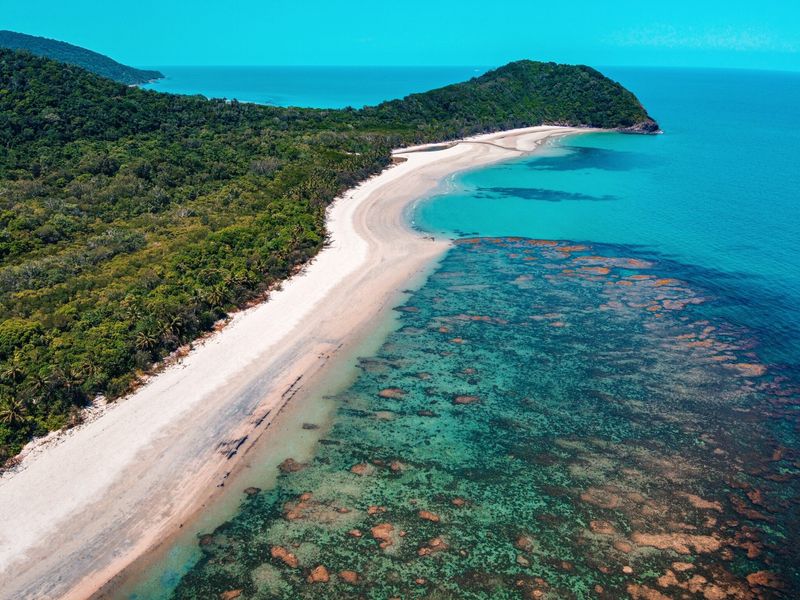
Where ancient rainforest meets the Great Barrier Reef, Cape Tribulation offers a wilderness experience unlike any other. The name itself, given by Captain Cook after his ship ran aground here, hints at the troubles awaiting unwary visitors.
Deadly box jellyfish invade these waters from October to May, their nearly invisible tentacles packing enough venom to kill an adult in minutes. If that weren’t enough, saltwater crocodiles patrol the beaches and estuaries year-round.
Add in cassowaries (flightless birds with dagger-like claws) and toxic plants in the surrounding rainforest, and you’ve got one of Australia’s most beautiful yet hazardous destinations. Guided tours are strongly recommended!
7. Fraser Island, Australia
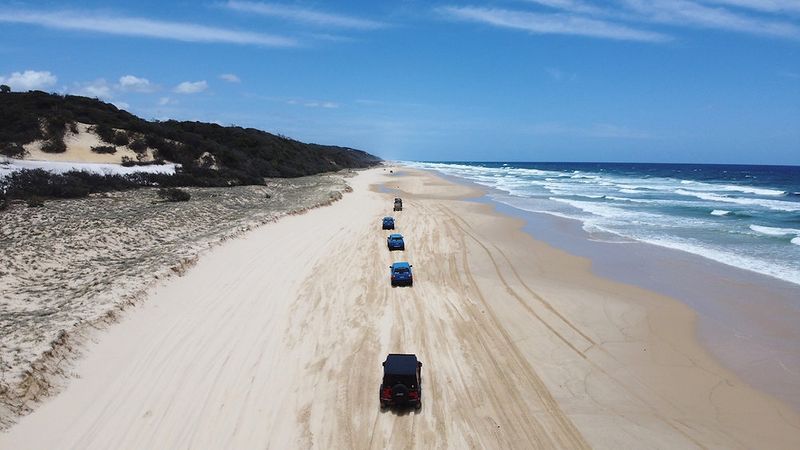
The world’s largest sand island boasts crystal-clear lakes, ancient rainforests, and 75 miles of uninterrupted beach. Fraser Island’s pristine environment attracts thousands of adventure seekers yearly, but dangers abound in this paradise.
Powerful rip currents and deep drop-offs make swimming treacherous along most of the coastline. Aggressive dingoes have attacked visitors, including children. Most surprisingly, the seemingly innocent inland lakes harbor deadly brain-eating amoebas when temperatures rise!
4WD accidents are common on the beach highway as inexperienced drivers navigate soft sand and incoming tides. Despite these risks, the island’s untamed beauty continues to captivate those willing to respect its wild nature.
8. Playa Zipolite, Mexico
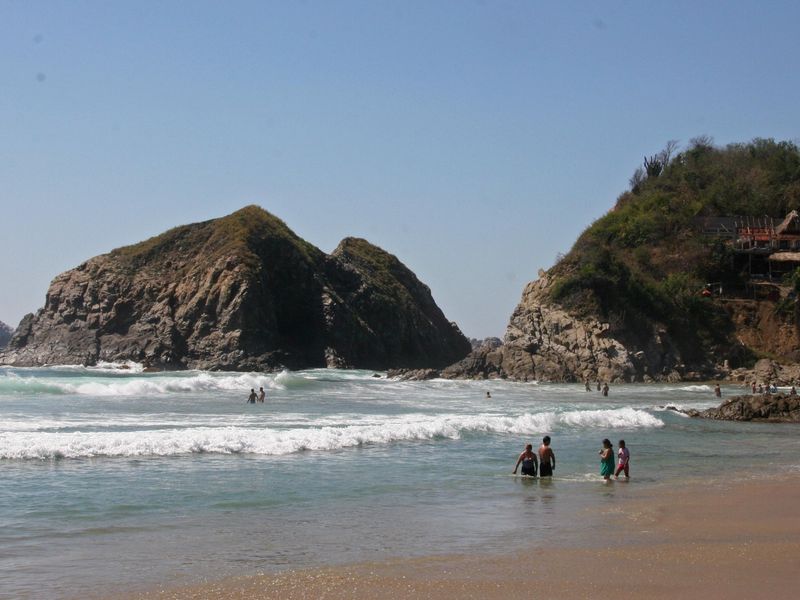
Known as the ‘Beach of the Dead’ in the indigenous Zapotec language, Zipolite’s laid-back vibe and clothing-optional policy have made it a counterculture haven since the 1960s. Palm trees sway above golden sands while dramatic cliffs frame this seemingly tranquil paradise.
Beneath the bohemian atmosphere lurks a deadly secret: powerful underwater currents and sudden drop-offs create perfect conditions for drowning. Before lifeguards were stationed here in the 1990s, dozens of deaths occurred annually.
Though safety has improved, swimmers still disappear into the Pacific’s grip every year. Locals perform rituals to appease the sea gods, believing the beach demands sacrifices in exchange for its extraordinary beauty.
9. Dumas Beach, India
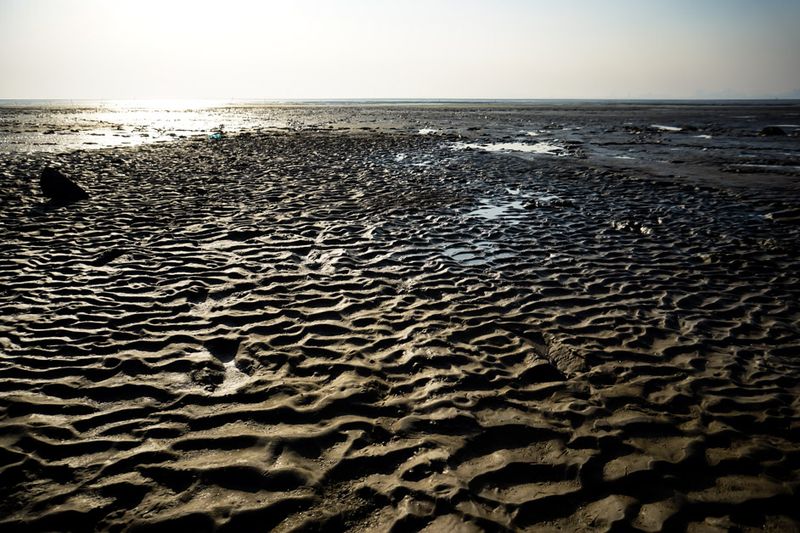
Stretching along the Arabian Sea near Surat, Dumas Beach appears ordinary with its black volcanic sand and gentle waves. Families picnic while locals sell coconut water and street food along the shore – but as night falls, many visitors hurry away.
According to widespread beliefs, this beach was once a Hindu burial ground, and paranormal activity is frequently reported. Visitors describe hearing whispers, seeing apparitions, and feeling unseen presences. Dogs refuse to approach certain areas and howl inexplicably.
Whether you believe in the supernatural or not, several disappearances have occurred here under mysterious circumstances. The contrast between daytime revelry and nighttime fear makes Dumas one of India’s most enigmatic beaches.
10. Amazon River Beaches, Brazil
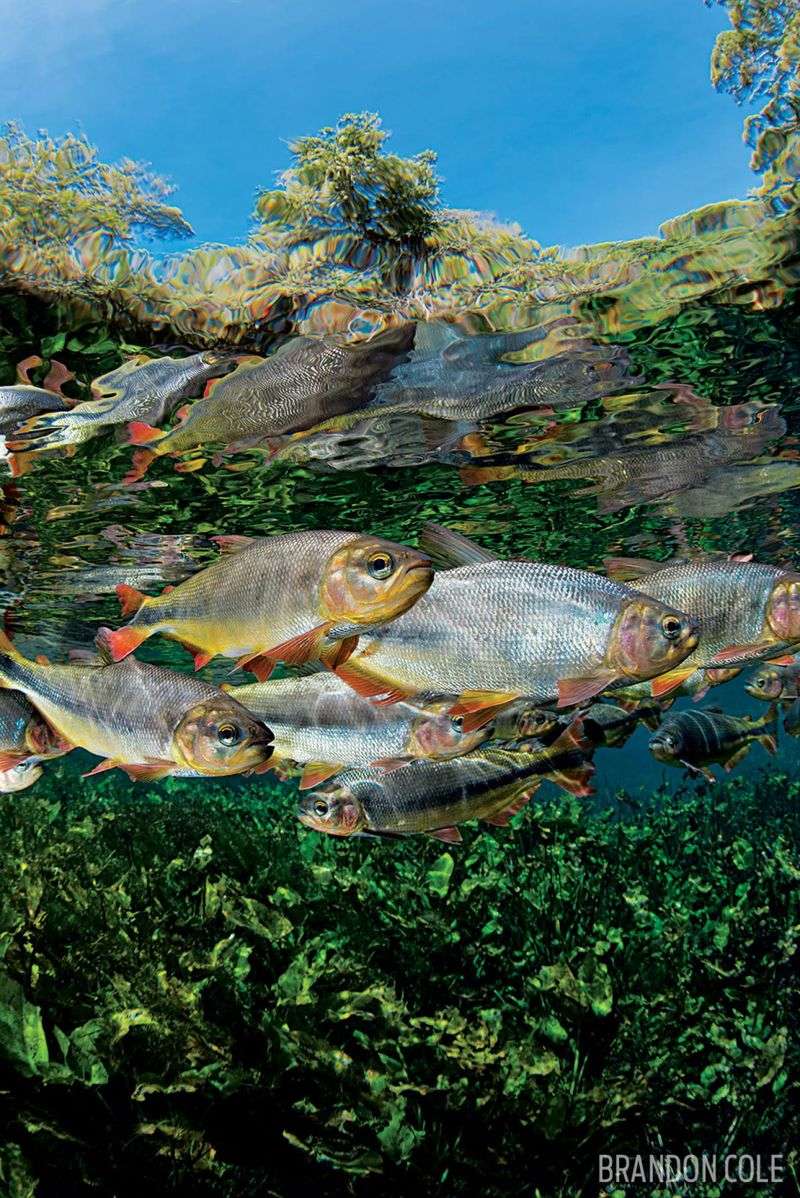
During dry season, the Amazon River reveals pristine white sand beaches that rival any tropical paradise. Locals call these temporary shorelines ‘praias,’ and they emerge like magic when water levels drop between July and December.
What makes these idyllic beaches deadly? The water teems with candiru (parasitic fish attracted to human urine), electric eels delivering 600-volt shocks, and aggressive bull sharks that swim 2,500 miles upstream from the Atlantic. Most feared are piranha, which can strip flesh from bone in minutes during feeding frenzies.
Anacondas and caimans also hunt along these shores, especially at dawn and dusk. Despite these dangers, riverside communities still gather on these beaches, knowing which areas are safer than others.
11. New Smyrna Beach, Florida
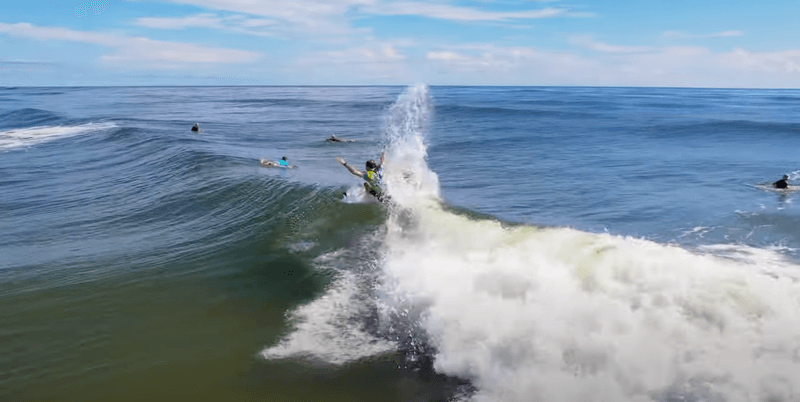
Dubbed the ‘Shark Attack Capital of the World,’ New Smyrna Beach combines Florida sunshine with a serious bite risk. Its perfect waves attract surfers year-round, creating an irresistible playground despite the danger.
The beach sits near Ponce Inlet, where abundant fish draw sharks seeking an easy meal. Murky water from tidal movements creates poor visibility, so sharks often mistake thrashing surfers for prey. Most attacks are ‘hit and run’ bites from confused sharks, but they’re still terrifying!
Scientists estimate anyone who’s swum here has been within 10 feet of a shark. Despite over 300 recorded attacks, locals shrug it off as part of beach life – though visitors might think twice before paddling out.
12. Shire’d Island, Florida (Too Risky)
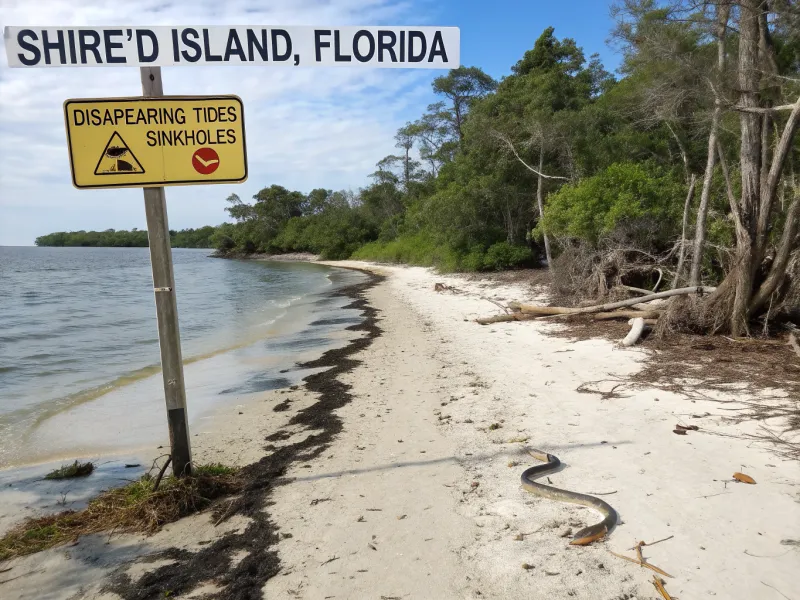
Hidden in Florida’s Ten Thousand Islands region, Shire’d Island’s secluded beaches look like paradise untouched. White sand curves around crystal waters with no development in sight. But this tranquility masks extreme danger.
The island’s beaches regularly disappear completely during high tide, stranding visitors. Search and rescue operations are nearly impossible due to the complex maze of mangroves surrounding it. Venomous water moccasins and coral snakes thrive here in unusually high numbers.
Most alarming are the unpredictable sinkholes that have swallowed entire sections of beach without warning. Park rangers actively discourage visits, and boat captains refuse to transport tourists here – making this one destination best admired from afar.
13. Utakleiv Beach, Norway
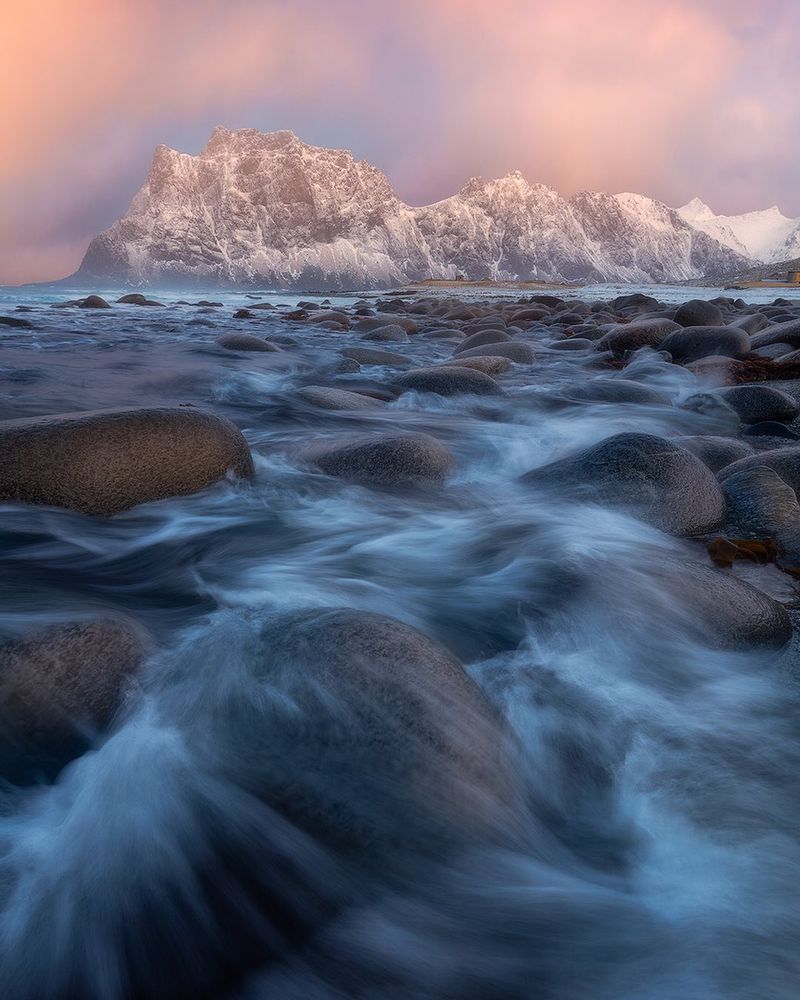
Famous for its heart-shaped rock and spectacular Northern Lights views, Utakleiv Beach on Norway’s Lofoten Islands seems plucked from a fairytale. Smooth stones polished by centuries of waves create a photographer’s dream against dramatic mountain backdrops.
The deadly aspect? Winter temperatures regularly plunge below freezing, and rogue waves can sweep visitors into the Norwegian Sea without warning. Hypothermia sets in within minutes in these icy waters.
Powerful Arctic storms develop rapidly, trapping beach visitors with hurricane-force winds and snow. Cell service is virtually nonexistent, meaning rescue may not come for hours or days. The beach’s otherworldly beauty comes with the very real risk of becoming a frozen casualty.
14. Second Beach, Washington
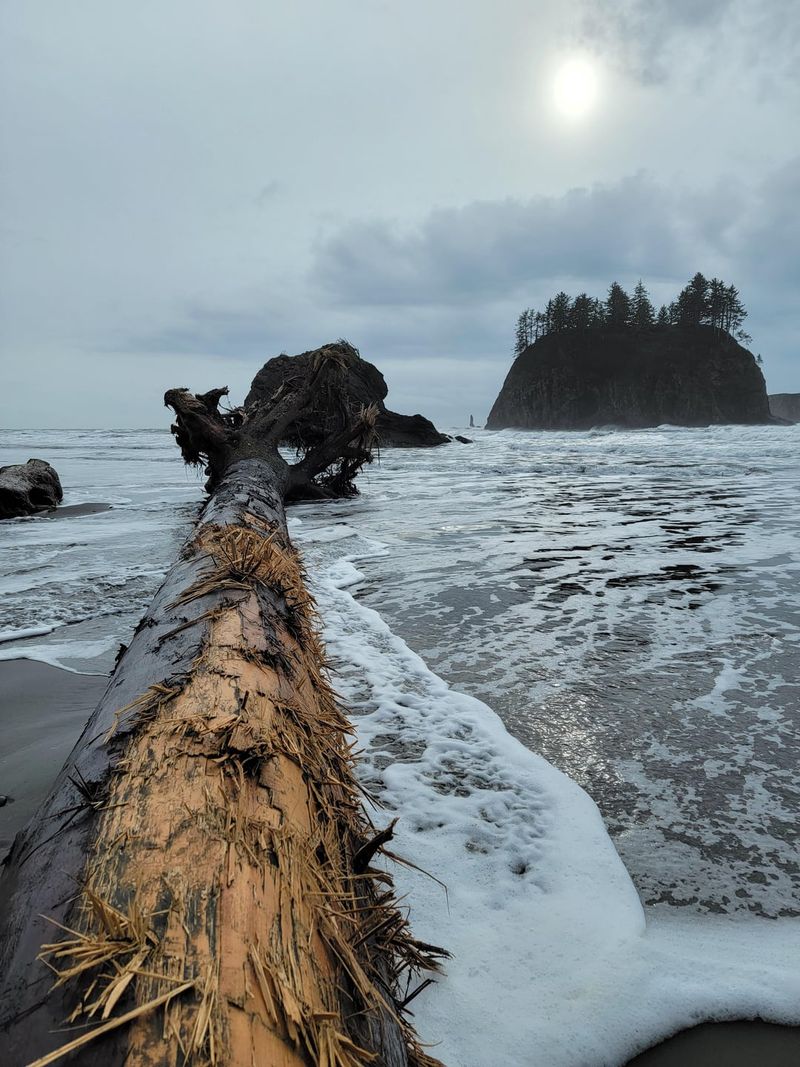
Olympic National Park’s Second Beach enchants visitors with its massive sea stacks, tide pools teeming with colorful marine life, and driftwood sculptures scattered across misty shores. Bald eagles soar overhead while waves crash against natural stone arches.
The danger here comes from sneaker waves – massive, unpredictable surges that can appear without warning even on calm days. These powerful walls of water have swept adults and children out to sea, often while victims were simply taking photos or exploring tide pools.
Hypothermia is another serious risk, as Pacific Northwest waters rarely exceed 55°F even in summer. The beach’s remote location means emergency services can take over an hour to arrive – an eternity when someone is drowning or suffering from cold exposure.
15. Tamarama Beach, Australia
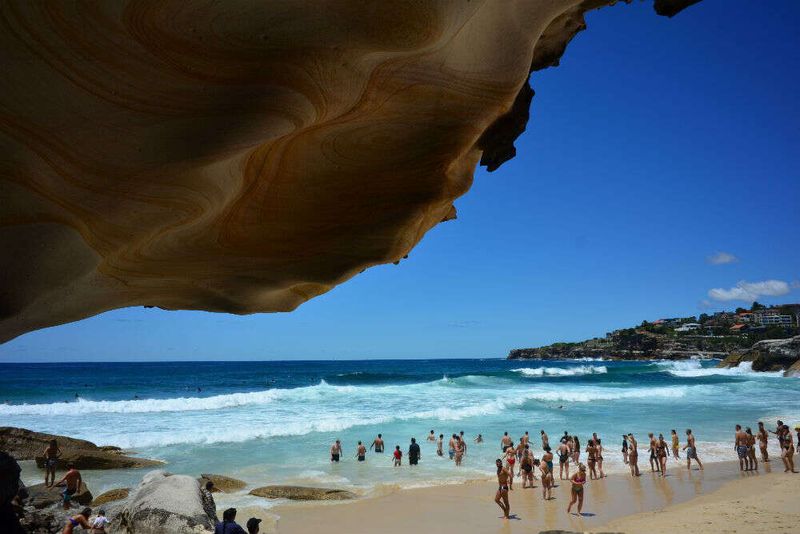
Nicknamed ‘Glamarama’ for the beautiful people who frequent it, Tamarama Beach sits between famous Bondi and Bronte beaches along Sydney’s coastal walk. Its perfect crescent of golden sand and crystal blue water make it a photographer’s dream and sunbather’s paradise.
Behind this glamorous facade lies Australia’s most dangerous urban beach. Powerful rip currents form in the narrow bay, creating a natural funnel that sweeps swimmers out to sea. Even on calm days, these underwater rivers flow at Olympic swimmer speeds!
Lifeguards perform hundreds of rescues annually on this tiny stretch of sand. Despite prominent warning signs and flags, Tamarama’s deadly beauty continues to lure visitors into its treacherous embrace year after year.
16. Guinea’s Cape Verga Coast (Too Risky)

Guinea’s Cape Verga coastline boasts untouched white sand beaches and turquoise waters that rival any Caribbean paradise. Palm trees frame pristine coves where fishing boats dot the horizon – a perfect postcard scene rarely visited by tourists.
The extreme danger here isn’t natural but human. This isolated region has become a major transit point for drug trafficking between South America and Europe. Armed groups control stretches of beach, with violent confrontations common.
Adding to the risk, medical facilities are virtually nonexistent, and the area has one of the world’s highest rates of waterborne diseases. Multiple governments have placed this entire coastline on their “do not travel” lists despite its natural beauty, making it one destination that remains firmly in the “too risky” category.
17. Chowpatty Beach, India (Too Risky)
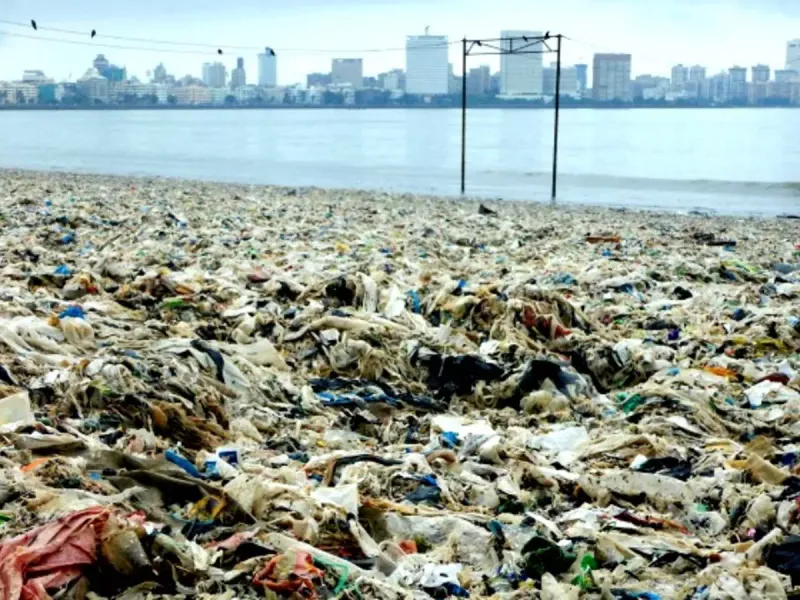
Iconic Chowpatty Beach sits in the heart of Mumbai, offering spectacular sunset views of Marine Drive’s “Queen’s Necklace” skyline. Street food vendors serve up delicious bhel puri while families gather to escape the city’s crush – a vibrant scene of urban beach life.
What makes it deadly? Chowpatty ranks among the world’s most polluted beaches. Raw sewage flows directly into the bay, creating toxic water with bacterial levels thousands of times above safety standards. Medical waste, including used syringes, regularly washes ashore.
Heavy metal contamination has reached levels that can cause immediate skin reactions and long-term health problems. Despite cleanup efforts, the beach remains a toxic hazard zone where swimming is strictly prohibited but sadly still occurs among those unaware of the invisible dangers.
18. Mindanao Coastal Stretch, Philippines
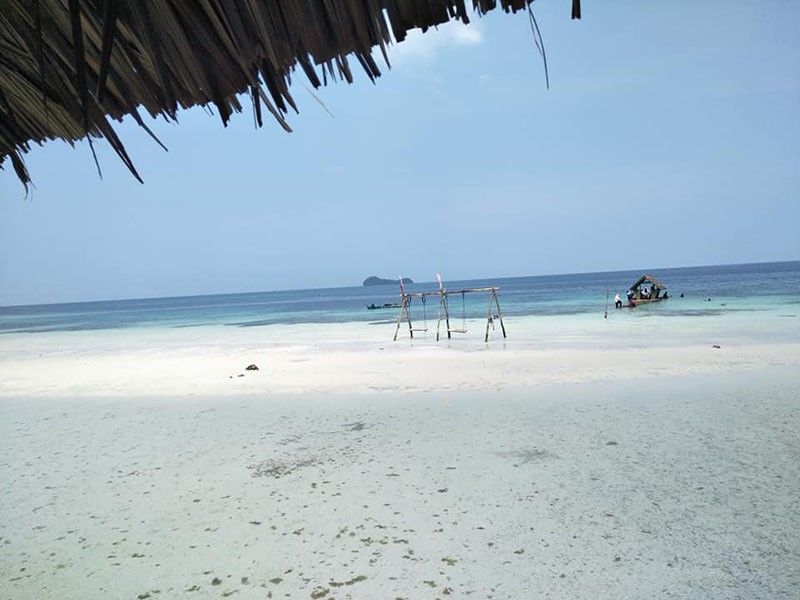
The southern Philippines island of Mindanao boasts some of the country’s most undeveloped beaches – pristine white sand, swaying coconut palms, and crystal waters teeming with marine life. Coral reefs rival those of more famous destinations, yet tourists remain rare.
This absence of visitors stems from the region’s volatile security situation. Multiple extremist groups operate along these shores, with kidnappings targeting foreigners. Maritime piracy remains common in nearby waters.
Natural dangers compound human threats – box jellyfish, blue-ringed octopus, and sea snakes inhabit these waters, while typhoons regularly devastate coastal areas. Despite conservation efforts creating marine sanctuaries of extraordinary beauty, most travelers heed government warnings to avoid this troubled paradise entirely.
